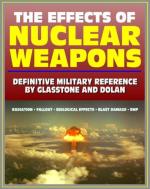|
This section contains 650 words (approx. 3 pages at 300 words per page) |

|
The 1950 decision to build a hydrogen bomb involved the consideration of U.S. strategic, scientific, and moral concerns in light of the growing threat from the Soviet Union. The decision was part of an arms race with the Soviet Union, which lasted throughout the Cold War (1946–1991) and fueled America's military buildup. Continued development of nuclear weapons would divide opinion on security issues in the Cold War era. The arms race contributed to the public's fear of nuclear holocaust and led President Dwight Eisenhower to seek a reduction of arms, warning against the dangerous effects of the military-industrial complex on American society and culture.
The physicists Edward Teller and Enrico Fermi first discussed the idea of a hydrogen bomb in 1941 while working at the nuclear research facility in Los Alamos, New Mexico. An atomic blast, they postulated, might heat deuterium (hydrogen2) enough to...
|
This section contains 650 words (approx. 3 pages at 300 words per page) |

|


